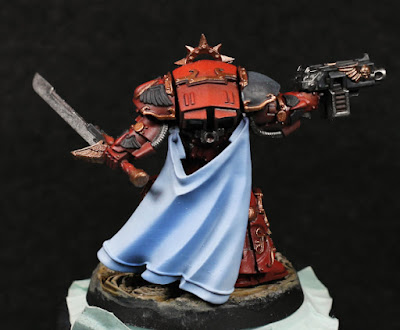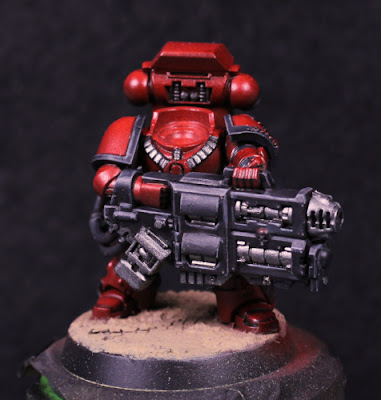 |
| ...and behind door number one... |
It's been quite some time since I last worked on the boarding actions terrain, and honestly there's not a whole lot done quite yet. It's been staring at me for quite some time, but I've never been able to figure out the style I want to go for.
Since the last time I went over just about all of it with a black ink (tending towards brown) mixed with copies amounts of flow improver to turn it into a wash of sorts, and then used a damp brush to clean up some of the surfaces. The inks I'm using reactivate with water sometimes, so this method is almost like an oil wash in some regards. The general idea was to add some definition to places but to allow the base to be dirtied up a bit more in general. I should have done a drybrush to highlight before then, or even some simple edge highlights - might need to go back in and do that later. The ink can leave behind tide marks if too much water is used, so I leaned into that for scratches, dirt, and general wear & tear lines by using Nuln Oil later.
The cabling took a long time to figure out that a base coat of Corvus Black is enough for most of it. Mixing in either Stegadon Scale Green, or even better Incubi Darkness, gives them a little more colour for highlights without making them too similar to the base colour.
Recently I've been finding uses for the Two Thin Coats range, notably Doom Metal, and that's now my go-to for junction boxes, access terminals, and the like. I'll highlight with something later (likely Iron Warriors), reserving final highlights after I varnish everything.
Most of the brass looking areas are so far Castellax Bronze (a layer paint but with good enough coverage to be a base paint) followed by Runelord Brass (the old layer paint version). Retributor Armour for some of the buttons on the terminal just for visual interest, and all of the above for the lettering on the panels. I might yet put a shade around the lettering to increase contrast there and make them stand out more.
Still plenty to go - the skulls, the lighting, the terminal screen, and rust in a few places would be suitable. I'm tempted to try a couple of things with the airbrush for the terminal screen for a cheap OSL effect, which will need to wait until I have the painting space setup again for that. Same again for the lights above the door maybe (one will be red, the other green, imagining it would show door status, pressurisation, or some such information) however I don't know if I want the OSL on the door itself. That door opens, and it would look weird if it kept some of the OSL when that was the case. I'll need to think some more about that.
-- silly painter.




























